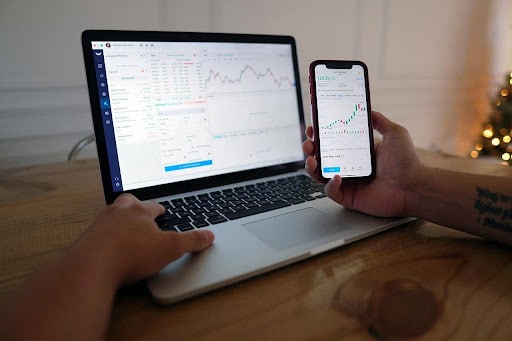Forex trading in Kenya has gained significant traction over recent years, with more advanced traders seeking to maximize their profits through refined techniques and comprehensive market analysis. This article delves into practical strategies and analytical methods tailored specifically for the Kenyan market, providing insights that can help seasoned traders enhance their trading performance.
Understanding the Forex Market in Kenya
Kenya’s forex market is vibrant and evolving, driven by a growing economy and increased access to trading platforms. The Central Bank of Kenya plays a crucial role in regulating the market, ensuring stability and transparency. Advanced traders in Kenya must understand the local economic indicators, regulatory environment, and geopolitical factors that influence currency movements.
Key Economic Indicators
- GDP Growth Rate: A strong GDP growth rate often signals a healthy economy, boosting the national currency.
- Inflation Rate: Inflation affects purchasing power and currency value. Monitoring Kenya’s inflation trends is essential for making informed trading decisions.
- Interest Rates: The Central Bank of Kenya’s interest rate decisions impact the forex market significantly, influencing currency value and investor sentiment.
Practical Techniques for Advanced Forex Trading
Technical Analysis
Technical analysis involves using historical price data and statistical indicators to predict future price movements. Advanced traders in Kenya can leverage various tools and techniques for more accurate market predictions.
- Moving Averages: Simple Moving Average (SMA) and Exponential Moving Average (EMA) help identify trends and potential reversal points.
- Relative Strength Index (RSI): RSI measures the speed and change of price movements, helping traders identify overbought or oversold conditions.
- Fibonacci Retracement: This tool helps in identifying potential support and resistance levels by analyzing the key Fibonacci levels (38.2%, 50%, 61.8%).
Fundamental Analysis
Fundamental analysis focuses on evaluating economic, financial, and other qualitative and quantitative factors that affect currency value.
- Economic Reports: Regularly reviewing reports such as the Central Bank of Kenya’s monetary policy statements, inflation reports, and employment data can provide critical insights.
- Global Events: Staying updated on international events, such as geopolitical tensions or economic crises, is vital as these can impact currency movements.
- Market Sentiment: Gauging market sentiment through news, social media, and expert opinions can help in anticipating market reactions.
Risk Management Strategies
Effective risk management is crucial for long-term success in forex trading. Advanced traders in Kenya must employ strategies that protect their capital while allowing for potential gains.
- Position Sizing: Determining the correct position size based on account size, risk tolerance, and market conditions is fundamental to managing risk.
- Stop-Loss Orders: Setting stop-loss orders helps in limiting potential losses by automatically closing a position at a predetermined level.
- Diversification: Spreading investments across different currency pairs can reduce risk exposure and enhance potential returns.
Leveraging Technology
Technological advancements have revolutionized forex trading, offering advanced traders in Kenya various tools and platforms to improve their trading strategies.
- Trading Platforms: Platforms like MetaTrader 4 (MT4) and MetaTrader 5 (MT5) provide advanced charting tools, automated trading options, and real-time market data.
- Algorithmic Trading: Developing and using trading algorithms can help in executing trades based on predefined criteria, minimizing emotional decision-making.
- Mobile Trading Apps: Mobile apps enable traders to monitor and manage their trades on-the-go, ensuring they never miss an opportunity.
Advanced Analytical Techniques for Forex Trading in Kenya
Sentiment Analysis
Sentiment analysis involves assessing the overall mood of the market, which can be a powerful tool for predicting currency movements. Advanced traders in Kenya can use sentiment analysis to gain an edge in their trading strategies.
- News Analysis: Regularly reviewing financial news, social media feeds, and market commentary can provide insights into market sentiment.
- Commitment of Traders (COT) Reports: These reports offer a snapshot of the market positioning of large traders and can indicate potential market reversals.
- Sentiment Indicators: Tools like the Daily Sentiment Index (DSI) and other sentiment indicators can help gauge the market’s bullish or bearish outlook.
Intermarket Analysis
Intermarket analysis examines the correlations between different financial markets, such as commodities, equities, and bonds, to forecast currency movements.
- Commodity Prices: Kenya’s economy is influenced by commodity prices, particularly agricultural products and crude oil. Monitoring these prices can provide clues about currency trends.
- Stock Market Performance: The performance of the Nairobi Securities Exchange (NSE) can impact forex markets, as strong equity performance often correlates with a stronger currency.
- Bond Yields: Changes in government bond yields can influence currency values, as higher yields attract foreign investment, strengthening the currency.
Implementing Effective Trading Strategies
Trend Following
Trend following strategies involve identifying and trading in the direction of the market trend. Advanced traders in Kenya can use these strategies to capitalize on sustained market movements.
- Moving Average Crossovers: Using multiple moving averages, such as the 50-day and 200-day moving averages, traders can identify trend reversals and entry points.
- Breakout Strategies: Identifying and trading breakouts from key support and resistance levels can be effective in capturing strong price movements.
- Trend Lines: Drawing trend lines on price charts helps in identifying the direction and strength of a trend, providing valuable entry and exit points.
Counter-Trend Trading
Counter-trend trading involves trading against the prevailing market trend, aiming to profit from short-term price corrections.
- Oscillators: Indicators like the Stochastic Oscillator and RSI can help identify overbought and oversold conditions, signaling potential reversal points.
- Divergence: Watching for divergence between price and indicators, such as RSI or MACD, can indicate potential trend reversals.
- Support and Resistance Levels: Trading around key support and resistance levels can provide opportunities for counter-trend trades.
Continuous Learning and Adaptation
The forex market is dynamic, and continuous learning is essential for maintaining a competitive edge. Advanced traders in Kenya should stay updated with the latest market developments and continuously refine their strategies.
- Educational Resources: Utilizing online courses, webinars, and books by experienced traders can enhance trading knowledge and skills.
- Trading Communities: Engaging with local and international trading communities can provide valuable insights and support.
- Backtesting: Testing trading strategies on historical data helps in understanding their effectiveness and refining them before applying in live markets.
Conclusion
Enhancing forex trading in Kenya requires a blend of practical techniques, thorough market analysis, and continuous learning. By leveraging advanced tools and strategies, traders can navigate the complexities of the forex market and achieve greater success. Whether it’s through technical or fundamental analysis, risk management, or leveraging technology, staying informed and adaptable is key to thriving in Kenya’s dynamic forex trading environment.




